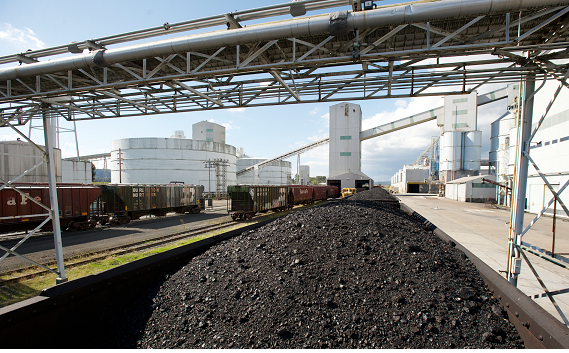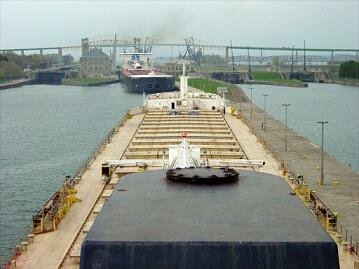

Home ||| Bulk Cargo ||| Planning ||| Care ||| Safety||| Self unloaders
Suitability of Shore Terminals for handling bulk cargo

Maintaining standards and check items for bulk terminals
Terminals should determine the suitability of a ship for compatibility with both loading and/or unloading terminal infrastructure as appropriate.
It is important that the terminal operator keeps its relevant customers informed of current terminal standards, limitations and operating conditions in terms of any changes to relevant navigational conditions, water depths, loading/unloading equipment and rates.

Fig: bulk terminal coal handling
In addition to the checks carried out by the charterer and/or shipper and/or receiver, the terminal operator should take reasonable steps to assure that all bulk carriers nominated for loading/unloading at the terminal are operationally suitable in all respects for the purpose.

The following checks are examples of the type of checks that may be carried out from appropriate sources of information to confirm that ship meets berth maximum and minimum size limits.:
i) Length overall/Beam/Draft.
ii) Number of holds.
iii) Hatch lengths and widths. Compare dimensions with the most suitable hatch openings on the basis of the terminal's own experience. If hatches are less than the preferred size, loader/unloader operators should be informed and appropriate precautions taken.
iv) Gearless/Geared/Gear Type. Location of gear.
v) Working length from foreward end No.1 hold to aft end aft hold.
vi) Any equipment, design details or performance limitations that could affect the safety or efficiency of the operation.
Related Information
Terminal information required by ships handling bulk cargo
Preparation and Guidelines for terminal prior to bulk cargo loading/unloading in ships
Terminal duties in loading solid bulk cargo
Terminal duties unloading solid bulk cargo
Training requirement for terminal personnel
Encountering hazards at the ship/shore interface during handling of Solid Bulk Cargoes
Required information from ship to terminal prior loading / unloading bulk cargo
High loading rates by shore terminal and potential problems for bulk carriers
Causes of structural damage and countermeasures
Deterioration of ships hull and consequences of hull damage /forward flooding
Bulk carrier hull damage - causes and preventive measures
How to avoid damage during cargo operation
How to arrange repair of damage during cargo loading/unloading
Our detail pages illustrated many safety aspects of Bulk carrier
Home page |||Bulk carrier types ||| Handling of bulk coal |||Cargo planning ||| Carriage of grain |||Risk of iron ores |||Self unloading bulk carriers |||Care of cargo & vessel |||Cargoes that may liquefy |||Suitability of ships |||Terminal guideline |||Hold cleaning |||Cargo cranes |||Ballast handling procedure |||Bulk carrier safety |||Fire fighting systems |||Bulk carrier General arrangement

Operation of sea going bulk carriers involved numerous hazards . Careful planning and exercising due caution for all critical shipboard matters are important . This site is a quick reference to international shipping community with guidance and information on the loading and discharging of modern bulk carriers so as to remain within the limitations as specified by the classification society.
It is vital to reduce the likelihood of over-stressing the ship's structure and also complying with all essential safety measures for a safe passage at sea. Our detail pages contain various bulk carrier related topics that might be useful for people working on board and those who working ashore in the terminal. For any remarks please Contact us
Copyright © 2010 bulkcarrierguide.com All rights reserved.
Although every effort have been taken to improve the accuracy of content provided the publisher of this website cannot gaurantee for errors. Disclaimer Privacy policy Home page

Top articles
- Regulation of pumping system of bulk carriers
- Ships Confined area safe practice
- Handling water ingress problems in bulk carrier, investigation and countermeasures
- Survival and safety procedure for bulk carriers
- Health hazards for personnel working in a dusty condition onboard
- Bulk carrier types - Ore carriers, OBO ships, forest product carrier , self unloader and more

